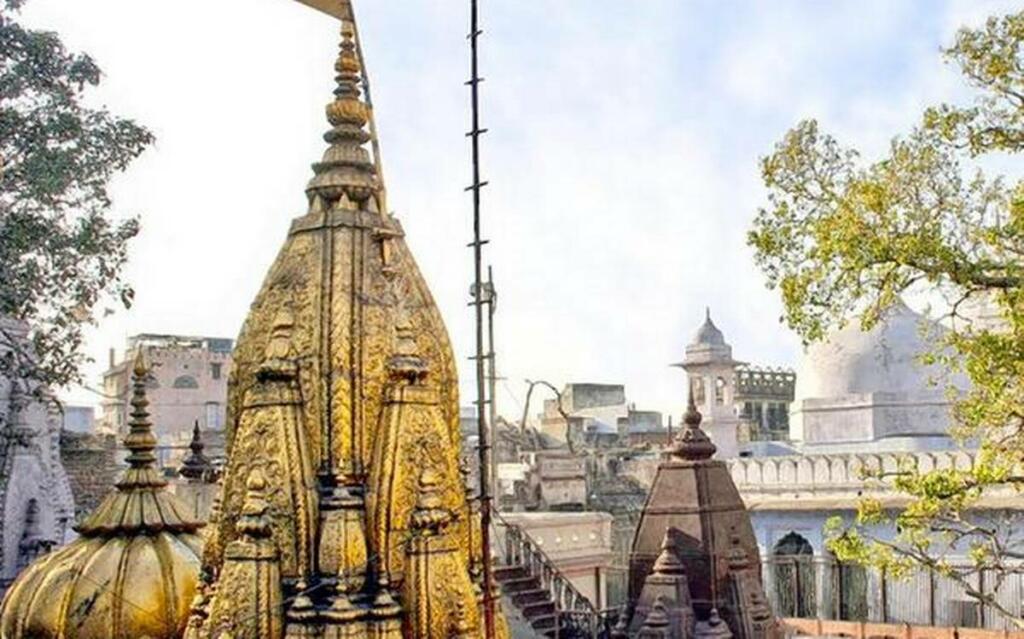Kashi Vishwanath Corridor- a project that was initiated by Prime Minister Modi in 2019 with the aim of beautification of the Kashi Vishwanath temple and the surrounding areas. Where on one side, a certain sect was spewing venom against Modi Government for erasing the heritage of Kashi in the name of construction, the government is leaving no stone unturned to restore the temples and rejuvenate the aged-old heritage.
17 Hindu deities to be restored in Kashi
Reportedly, the government has stepped in with the decision to construct twenty-seven temples along the corridor where Vigrahas will be re-established according to Vedic rituals.
Divya Kumar Soti, a National Security Affairs Analyst, tweeted, “KashiVishwanath Corridor to have 27 small temples where vigrahas will be re-established according to Vedic rituals. Out of these, 17 were found inside homes that were built by occupying them. Those 17 are being restored to their original form.”
Report: Kashi Vishwanath Corridor to have 27 small temples where vigrahas will be re-established according to Vedic rituals. Out of these, 17 were found inside homes that were built by occupying them. Those 17 are being restored to their original form. https://t.co/RTDP0qlZh4 pic.twitter.com/jYJUdThWIw
— Divya Kumar Soti (@DivyaSoti) November 16, 2021
PM Modi’s Kashi project
The idea was that while a grand Ram Temple is a sensitive issue close to the heart of every Hindu devotee, a number of other prominent temples such as the Kashi Vishwanath in Varanasi, the Krishna temple in Mathura, the Adinath temple in Malda, the Kali temple in Srinagar, were also destroyed during the Islamic invasion.
There has been a brewing sentiment to restore these temples into their ancient glory and after the resolution of the Ayodhya Ram JanmaBhoomi dispute, the government seem to be moving in that direction.
Read more: Modi government lays the groundwork for reclaiming KashiVishwanathMandir
In such a move, Prime Minister Narendra Modi initiated the project named Kashi Vishwanath Corridor. Due to a cut through the area, demolition of scores of ancient houses and Kashi lane, home to the famous Kashi Vishwanath temple was required.
Read More: PM Modi lays the foundation stone of KashiVishwanath Temple corridor
Locals protest against the project
Despite the fact that the corridor, 56 metres wide and 300 metres long is being constructed to establish a direct link from the temple to the Ganges river, an intense protest was witnessed at the time of the announcement of the project. Since these homes to be demolished had holy temples within them, the locals were even more distressed.
Krishna Kumar Sharma, a local resident, had stated, “A unique part about Kashi was that almost every home housed a temple. Now that they have demolished over 250 houses thus far, you can imagine the number of temples that have also been broken. On top of that, there’s no count of the number of deities’ idols that have been damaged.”
However, a few netizens came out in support of Modi and praised him for the move as the lanes which always posed a challenge to the devotees are also being modified under the project.
Why the project is needed?
Reportedly, more than five lakhs visitors reach the temple during the auspicious month of Shrawanand Mahashivratri every year and they have to face complications due to the crumbling infrastructure of the holy city.
Bimal Patel had told the media that “KashiVishwanath temple, built in 1780, and many other temples surrounding it were hemmed in on all sides by very dense and haphazard development.The many temples and fine houses in the area were insensitively built over, and public spaces were encroached upon. Access to the temple was severely constricted, unsafe and unfriendly to those with mobility issues.”
When people opposed the project claiming that it will erase heritage and promote ‘mall culture’, Patel had refuted the claims saying that “The project is designed to reinforce Varanasi’s heritage, culture and spirituality.”
Thus, the government, with the Kashi Vishwanath Corridor project, has not only improved the infrastructure of the holy city but also respected the sentiments of locals by restoring Hindu deities in their own temples.
